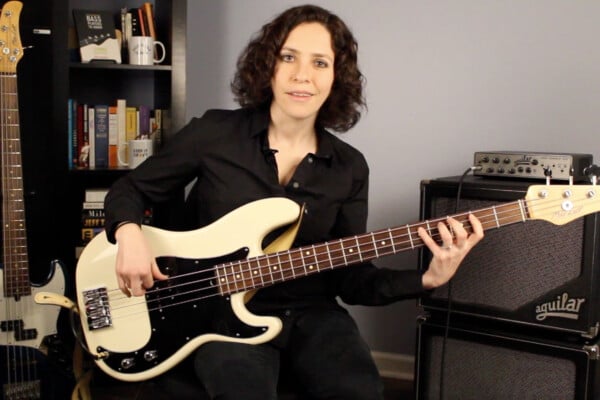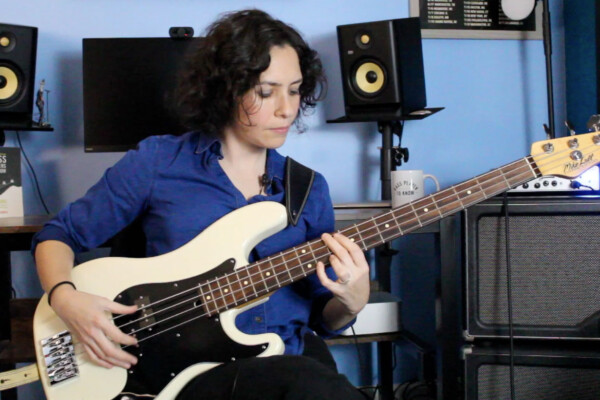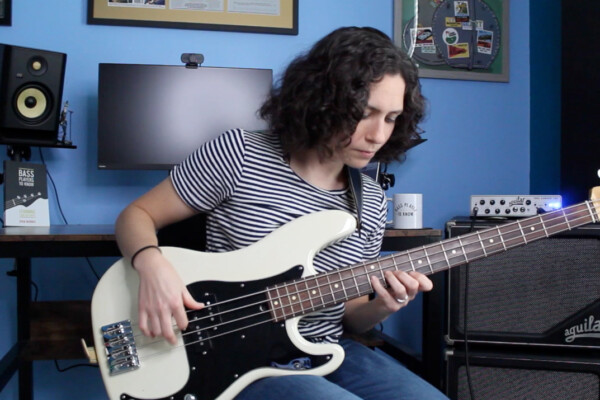Memorizing Chords and Scales

Q: I’m lucky enough to attend a college with a robust and demanding music department, and like a lot music in academia, this means I’m playing a fair amount of jazz. I’ve been a fan of the genre for a long time, but I am new to playing it and seem to have run into a problem with improvising and soloing. I can’t seem to memorize in a lasting way the notes contained within scales and arpeggios. Any suggestions on how to get a grasp of the notes of the chords, scales and arpeggios to allow me to improvise more freely?
A: I felt much of the same way through college and I’m afraid that there is no quick and easy way to memorize this stuff. It really just has to be hammered into your head, hands and ears.
But, there are some better ways than others to help internalize harmonic relationships like those you mentioned.
It took me my entire college career to just internalize the Major scale modes and chordal relationships (I didn’t help myself by starting out as a drummer and switching to bass later). What I did learn was also the entirety of my available harmonic devices for many years until I began to better understand how to use Symmetrical diminished, Harmonic and Melodic minor modes.
For me, my process has to involve focusing on patterns first and functional harmonic relationships second, in order for it to sink in. Here’s my approach – hopefully it’ll help!
Start with the scale
- Memorize the pattern of the one octave scale
- Expand that to one entire position on the fretboard
- Expand that to multiple positions on the fretboard
- Play the scale in broken intervals (i.e. 1,3,2,4,3,5,4,6,5,7…) and use all intervals possible (3rds, 4ths, 5ths…)
- Play the scale with double stops using each intervallic type (i.e.; play two notes at once. First ends, then 3rds, 4ths, 5ths, 6ths, 7ths. You can even continue and play 9ths, 10ths…) This really helps to force you to better understand the scale and how it lays on the fretboard).
Next, focus on arpeggios
- Play arpeggios starting from each note of the scale (i.e.; C?7, D-7, E-7, F?7, G7, A-7, Bø7 for the Major scale)
- Practice playing those up and down the fretboard
- Now practice going up one and down the next (i.e. 1357, 8642, 3579…)
Now start exploring those scales over changes
- Use a Real Book and pick a few tunes to study.
- Write out some appropriate modes to use for each chord type in the tune.
- Practice playing the tune slowly, over and over again, exploring those scales for each chord type.
Invent new ways to practice
Start inventing new ways to practice the scaler relationships (i.e. play each mode on one string, on each string…) This helps to internalize the intervallic relationships in a more linear way (horizontal vs vertical on the fretboard).
Work a lot with arpeggios and chord changes in every way you can conceive (i.e. inversions, full arpeggiated chord scales, 4 note arpeggios from every possible chord tone of the chord scale…) Be sure to take your time with each step and only work in bite-sized chunks. Maybe only focus on Major Harmony before expanding to Melodic Minor, for example.
It can take quite a while to really get the tonality fluid under your fingers and sounding right in your ears. Personally, I find it easiest to think about available tensions and chord tones (chord scales) and play to each chord type. But, it’s also important to play through the changes so I also pay close attention to commonalities and the differences moving from one chord to the next. I’ll often highlight those notes that are changing from one chord to the next. Also, pay special attention to noted extensions (#9, #11, etc..). Those notes are a major part of what is making that chord do what it does. Making use of those notes can really help to make a line sing.
One more thing to consider is the range of the bass guitar. This is my own theory – and you can take it or leave it – but I really do believe that some things just don’t sound as good on a bass as they do higher pitched instruments. This has been my struggle with Melodic minor. I think it just needs to be in the upper register to work melodically against the harmony much of the time. When it’s played on a bass, it’s too close to the foundational harmony and usually sounds wrong to my ears, even when other people play it.
As an example, we’ll take an extreme example of this. Follow this:
Play your open, low E string and let it ring. Let’s pretend that this is the root of your chord.
Now play and F# on the D string (4th fret).
Sounds pretty muddy and not very useful, right?
Well, now play that F# as high on the fretboard as you can against the open E string. Now, it starts to sound interesting, right?
It’s just a natural 9 and is a very pretty sound when used well, but in order for it to really do what it is meant to do, you have to jack it way up your fretboard before it can begin to do it’s job.
Because of this, I say not to get too hung up on protocol or what someone tells you are the modes you should use when playing jazz. I say explore them all and decide for yourself what works best for you.
Now, you can still get a lot out of studying what Charlie Parker did, and by learning a few Joe Pass licks, and so on. But that whole ‘it ain’t jazz if it ain’t melodic minor’ thing can take a hike.
Just explore your instrument, explore all tonalities – even try and make a few up yourself. Just explore intervallic relationships over changes and see what you come up with. Be sure to get your technique to a point where it doesn’t get in your way, at the very least.
There are no correct answers. There are a lot of rules when learning harmony, but most professionals learn them and forget them because they don’t matter. Music matters… if it sounds good to you, it works!
That said, you need to learn to walk before you can run, and memorizing all of this stuff and exploring ways to actually use it serve to make you more familiar with your instrument as well as harmony.
It’s crucial work (if a bit tedious).
Readers, I’ve shared what works for me. How about you? Share your approach to studying and memorizing chords and scales in the comments.
Have a question for Damian Erskine? Send it to [email protected]. Check out Damian’s instructional books, Right Hand Drive and The Improviser’s Path.




Damian that’s gotta be one of the most complete and concise treatment of the topic. Thanks!
Great advice Damian, and I agree about low interval limits. Our playing should probably get lower in the chord as we play in the lower register. Above our first octave or so, things can get more interesting. I suppose it also depends on the kind of comping that’s happening too, rootless voicings free up more choices.
really good advices
My head hurts :(
Thank you.
“i.e.; C?7, D-7, E-7, F?7, G7, A-7, Bø7 for the Major scale.” HUH????? I really wished I had taken music in school.
The order of naturally occurring chords bases on a Major scale. C major, as minor… Etc
This is great! Thank you.
Thatcis excellent advice. I’m working on similar stuff, and that just made my day!
One of my professors has started got working on improvising over short loops (say, Fmaj to F-, or a short II, V, I) We start by playing the appropriate straight up and down and shifting as the chords change…once you start to get it under your fingers it really helps you to see not just the scales/arpeggios for each individual chord, but how they are related and how you can use them in a piece. Hope that all made sense…
P.S. we usually use the real book app to create loops or isolate sections of tunes
*edit
start by playing the appropriate SCALE…forgot that one important word…
Hi Damian,
is it possible to give some examples, riffs for `Start with the scale`. Specially for the parts
– Play the scale in broken….
– Play the scale with double stops…
Thanks a lot.
Love this guy… He makes me wanna practice…
I lost myself myself in this part “Play the scale with double stops using each intervallic type….”.
Maybe it’s my english or some jargon that i’m not used too. Can you exemplify?
Thank you very much